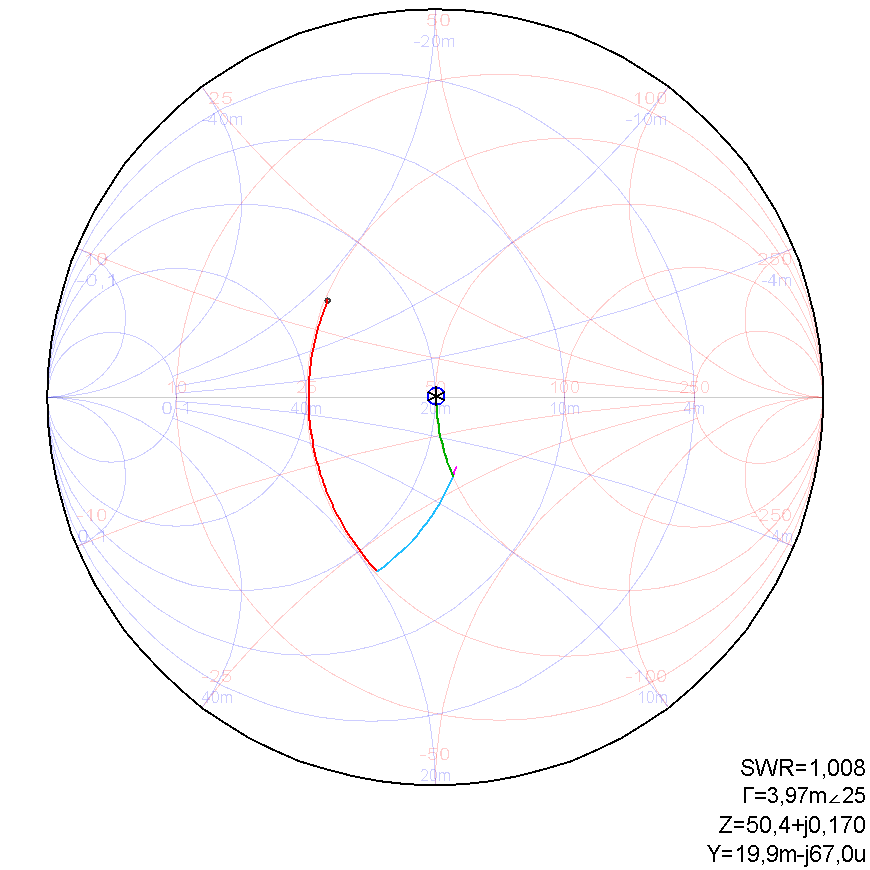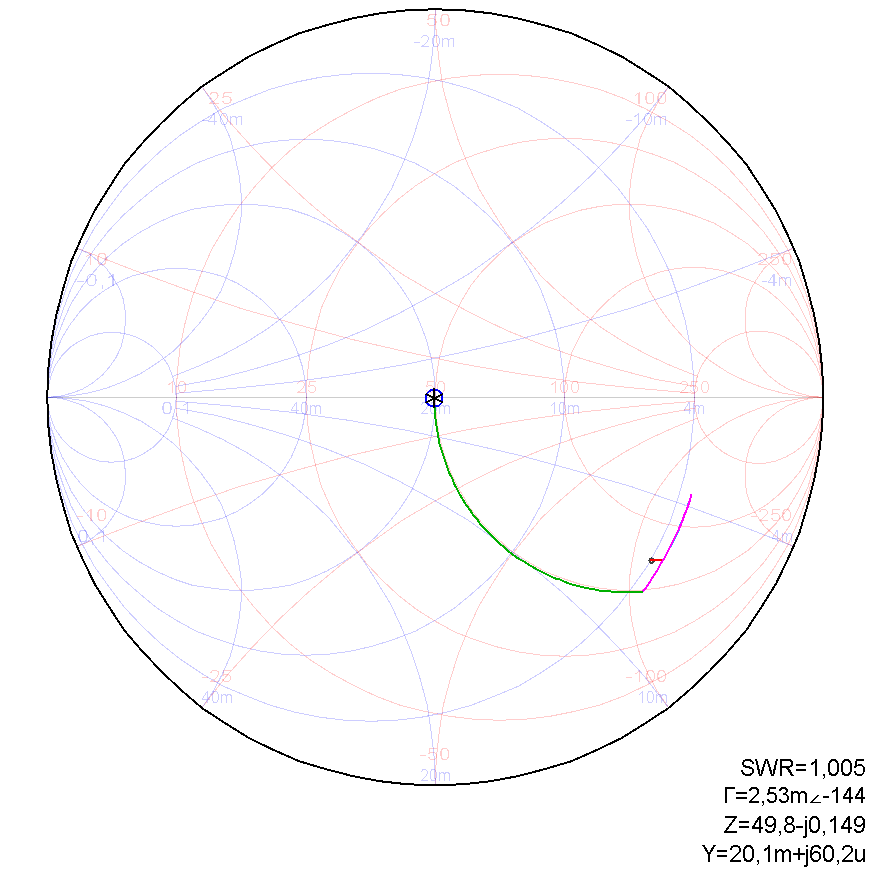SWRA730 February 2022 CC1311P3 , CC1311R3 , CC1312R , CC1312R7 , CC1314R10 , CC1352P , CC1352P7 , CC1352R , CC1354P10 , CC1354R10
- Trademarks
- Acronyms
- 1Description of the PCB Antenna
- 2Test Setup
- 3Unmatched Results
- 4Single-Band Matching and Result
-
5Dual Band Matching and Results
- 5.1 433-MHz and 2440-MHz Smith Chart, SWR, Bandwidth, and Efficiency
- 5.2 470-MHz and 2440-MHz Smith Chart, SWR, Bandwidth and Efficiency
- 5.3 490 MHz and 2440 MHz Smith Chart, SWR, Bandwidth and Efficiency
- 5.4 510-MHz and 2440-MHz Smith Chart, SWR, Bandwidth, and Efficiency
- 5.5 868/915 and 2440-MHz Smith Chart, SWR, Bandwidth, and Efficiency
- 6Summary - Bill of Materials and Results
- 7Conclusion
- 8References
5.3 490 MHz and 2440 MHz Smith Chart, SWR, Bandwidth and Efficiency
Figure 5-13 and Figure 5-14 show the theoretical Smith chart for matching the antenna for dual-band 490 and 2440 MHz with a theoretical SWR of 1.008 and 1.005.
 Figure 5-13 Theoretical Smith Chart for Dual Band 490-MHz Match
Figure 5-13 Theoretical Smith Chart for Dual Band 490-MHz Match Figure 5-14 Theoretical Smith Chart for Dual-Band 2440-MHz Match
Figure 5-14 Theoretical Smith Chart for Dual-Band 2440-MHz MatchFurther tuning of the antenna resonance was needed after realizing the theoretical match. Figure 5-15 and Figure 5-16 shows the resulting impedance and SWR, which at 1.078 for 490 MHz and 1.277 for 2440 MHz is less than the threshold for a good match of SWR < 2.0. Table 5-5 shows the BOM with components used to relies the matching network given in Figure 1-2.
The bandwidth of the antenna defined by SWR < 2.0 can be seen in Figure 5-16 to be 506 – 478.2 = 27.8 MHz for 490 MHz and 2567-2333 = 234 MHz for 2440 MHz.
| Ref. Designator | Murata Part Number | Value |
|---|---|---|
| Z60 | LQP03TN6N8H02 | 6.8 nH |
| Z61 | GRM0335C1HR10WA01 | 0.1 pF |
| Z62 | LQP03TN24NH02 | 24 nH |
| Z63 | GRM0335C1H100JA01 | 10 pF |
| Z64 | LQP03TN33NH02 | 33 nH |
Figure 5-17 and Figure 5-18 shows the radiation pattern of the antenna at 490 and 2440 MHz. Table 5-6 shows the TRP and efficiency for the antenna with the given matching network.
| Figure 43 | Figure 44 | |
|---|---|---|
| Frequency | 490 MHz | 2440 MHz |
| Power setting | 13 dBm | 10 dBm |
| Conducted output power | 12.17 dBm | 9.15 dBm |
| TRP | 7.12 dBm | 8.58 dBm |
| Efficiency | 31.6 % | 76.38 % |